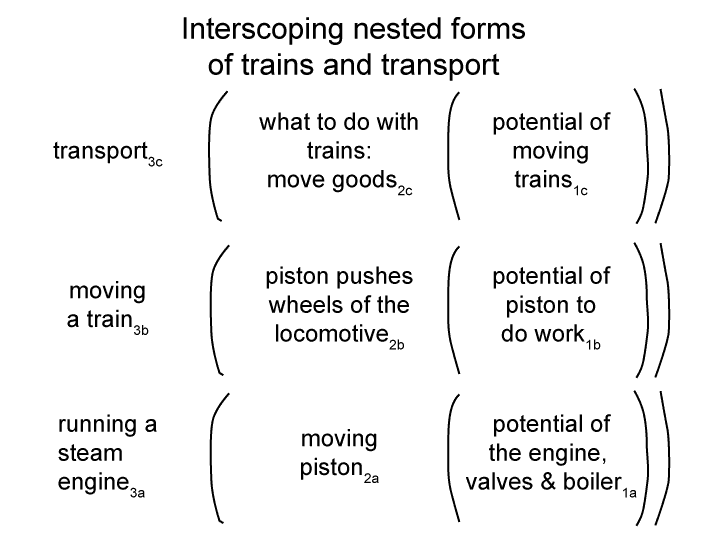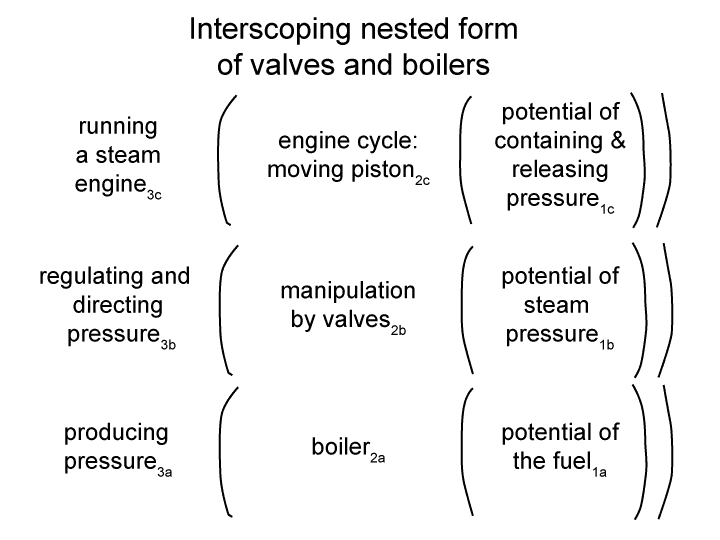Man and Sin by Piet Schoonenberg (1964) 2.3 H-2
[The single actuality that encompasses valves and boilers emerges from and situates two potentials that seem to have nothing to do with either boilers or valves.
The single actuality underlies the two normal contexts that describe the normal functioning steam engine.
It also belongs to a context that seems to have nothing to do with the mechanics of an engine. The normal context for the single actuality is the running of the engine.
That normal context is informed by the perspective of transportation in figure 2.3G.]


